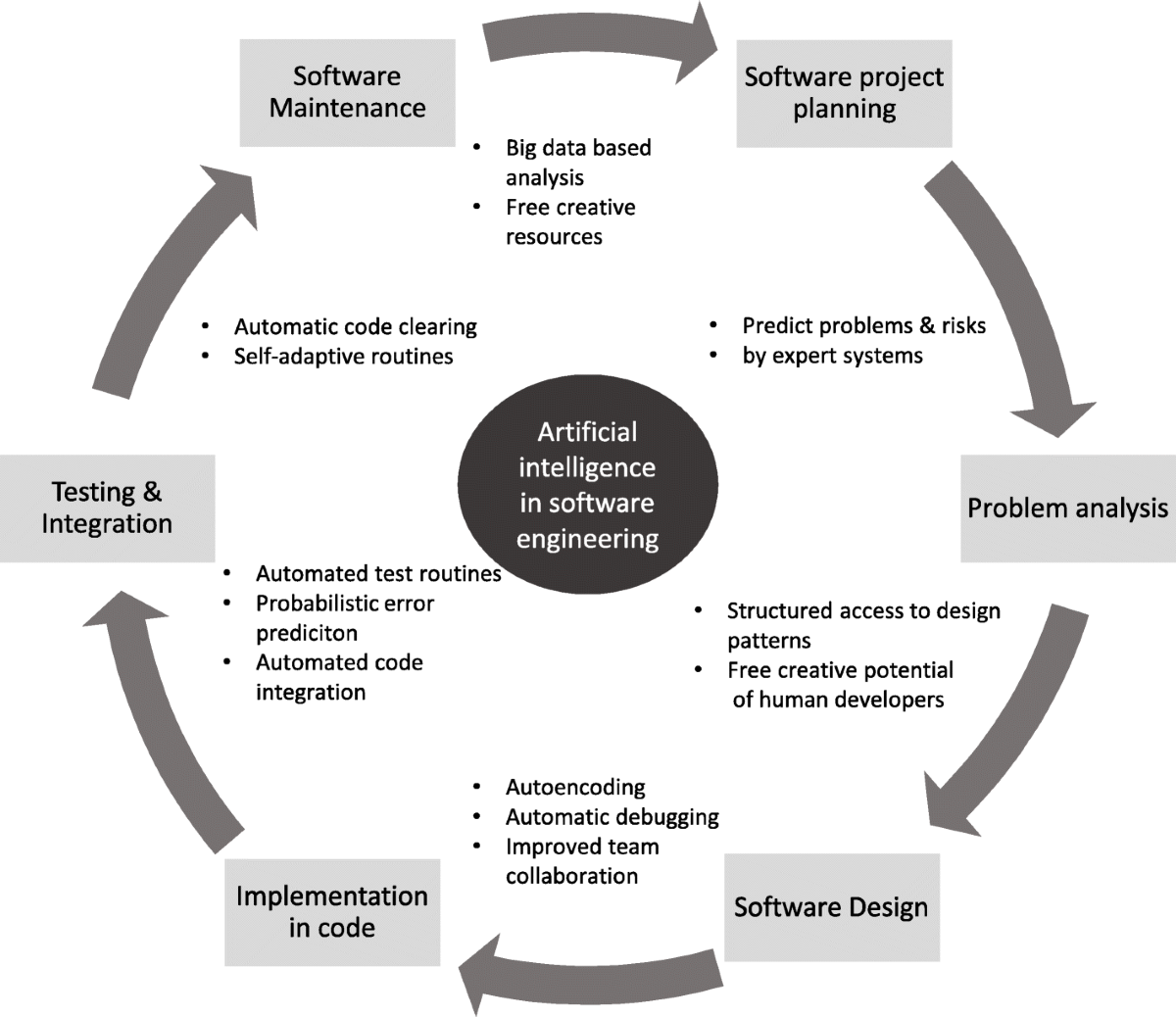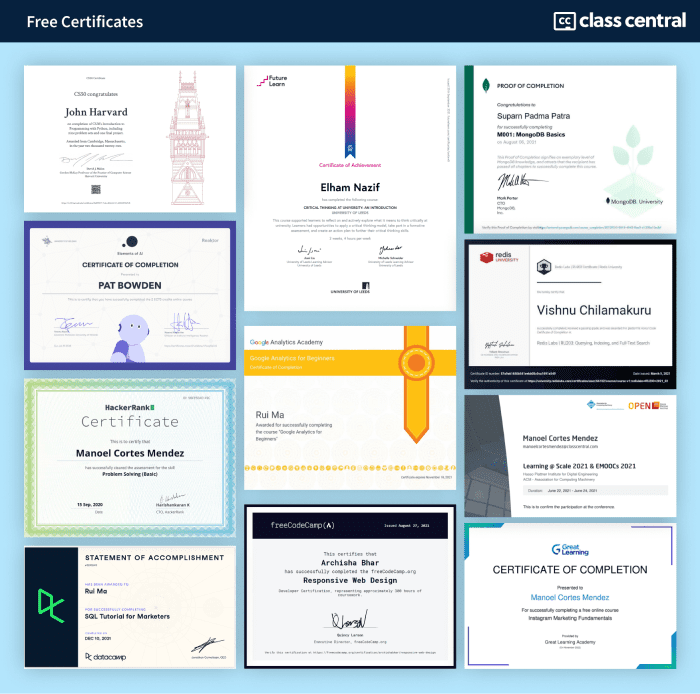All Categories
Featured
Table of Contents
- – The 7-Second Trick For How To Become A Machine...
- – Machine Learning Devops Engineer Things To Kno...
- – See This Report about I Want To Become A Mach...
- – 10 Easy Facts About Artificial Intelligence S...
- – Getting My Interview Kickstart Launches Best...
- – Getting The Machine Learning Engineer Course...
- – The Best Strategy To Use For How To Become A...
Some people think that that's dishonesty. Well, that's my whole occupation. If somebody else did it, I'm mosting likely to utilize what that person did. The lesson is putting that aside. I'm requiring myself to analyze the feasible services. It's more concerning consuming the material and attempting to use those concepts and much less about discovering a library that does the job or searching for someone else that coded it.
Dig a little deeper in the math at the start, simply so I can develop that foundation. Santiago: Ultimately, lesson number seven. This is a quote. It says "You have to comprehend every information of a formula if you desire to utilize it." And afterwards I claim, "I think this is bullshit recommendations." I do not think that you have to comprehend the nuts and screws of every algorithm before you utilize it.
I would certainly have to go and inspect back to really obtain a better instinct. That doesn't suggest that I can not address things making use of neural networks? It goes back to our sorting instance I think that's just bullshit recommendations.
As a designer, I have actually worked on lots of, several systems and I have actually utilized several, lots of points that I do not understand the nuts and screws of just how it functions, despite the fact that I comprehend the effect that they have. That's the final lesson on that string. Alexey: The funny thing is when I think concerning all these libraries like Scikit-Learn the algorithms they make use of inside to execute, for instance, logistic regression or something else, are not the like the formulas we study in maker understanding classes.
The 7-Second Trick For How To Become A Machine Learning Engineer
Even if we attempted to discover to obtain all these essentials of device discovering, at the end, the algorithms that these libraries use are different. Santiago: Yeah, absolutely. I believe we need a great deal more pragmatism in the market.

By the means, there are 2 various paths. I normally talk to those that wish to function in the industry that desire to have their impact there. There is a course for researchers and that is totally different. I do not dare to mention that since I don't recognize.
Right there outside, in the industry, materialism goes a long means for sure. (32:13) Alexey: We had a comment that stated "Really feels more like inspirational speech than speaking about transitioning." So perhaps we must change. (32:40) Santiago: There you go, yeah. (32:48) Alexey: It is a good motivational speech.
Machine Learning Devops Engineer Things To Know Before You Get This
One of the important things I intended to ask you. I am taking a note to discuss coming to be better at coding. But initially, let's cover a number of points. (32:50) Alexey: Let's begin with core devices and structures that you require to learn to in fact shift. Let's say I am a software application designer.
I understand Java. I understand SQL. I understand how to use Git. I recognize Bash. Perhaps I know Docker. All these things. And I find out about device learning, it feels like a cool point. What are the core devices and structures? Yes, I saw this video and I get encouraged that I do not need to get deep right into mathematics.
Santiago: Yeah, definitely. I believe, number one, you ought to start discovering a little bit of Python. Since you already recognize Java, I do not assume it's going to be a massive change for you.
Not because Python is the same as Java, but in a week, you're gon na get a great deal of the differences there. You're gon na be able to make some development. That's leading. (33:47) Santiago: Then you get specific core tools that are mosting likely to be used throughout your whole career.
See This Report about I Want To Become A Machine Learning Engineer With 0 ...
That's a collection on Pandas for data manipulation. And Matplotlib and Seaborn and Plotly. Those 3, or one of those three, for charting and presenting graphics. Then you get SciKit Learn for the collection of machine discovering formulas. Those are tools that you're mosting likely to have to be utilizing. I do not recommend simply going and learning more about them unexpectedly.
We can discuss details training courses later on. Take one of those training courses that are mosting likely to start presenting you to some troubles and to some core ideas of device understanding. Santiago: There is a course in Kaggle which is an intro. I don't keep in mind the name, however if you most likely to Kaggle, they have tutorials there free of cost.
What's good concerning it is that the only demand for you is to recognize Python. They're going to present a problem and tell you how to use decision trees to resolve that certain issue. I assume that process is exceptionally effective, since you go from no device learning history, to recognizing what the issue is and why you can not resolve it with what you know right currently, which is straight software application engineering methods.
10 Easy Facts About Artificial Intelligence Software Development Shown
On the other hand, ML engineers focus on structure and releasing machine discovering models. They focus on training models with information to make predictions or automate tasks. While there is overlap, AI engineers handle even more varied AI applications, while ML designers have a narrower concentrate on equipment understanding algorithms and their practical execution.

Equipment knowing engineers focus on establishing and releasing device knowing designs into production systems. On the various other hand, information scientists have a broader duty that includes data collection, cleaning, expedition, and building designs.
As companies increasingly adopt AI and machine understanding innovations, the demand for proficient professionals grows. Machine knowing designers function on sophisticated tasks, contribute to development, and have competitive incomes.
ML is basically different from traditional software application development as it concentrates on mentor computer systems to pick up from information, instead of shows explicit policies that are performed systematically. Unpredictability of outcomes: You are probably utilized to composing code with foreseeable outcomes, whether your feature runs when or a thousand times. In ML, nevertheless, the outcomes are much less particular.

Pre-training and fine-tuning: How these versions are educated on vast datasets and then fine-tuned for specific tasks. Applications of LLMs: Such as text generation, view evaluation and info search and retrieval.
Getting My Interview Kickstart Launches Best New Ml Engineer Course To Work
The capacity to handle codebases, combine changes, and solve conflicts is just as essential in ML growth as it remains in traditional software program projects. The abilities established in debugging and screening software application applications are highly transferable. While the context might alter from debugging application logic to determining concerns in data handling or version training the underlying concepts of organized examination, hypothesis screening, and repetitive improvement are the very same.
Machine learning, at its core, is greatly reliant on data and likelihood concept. These are important for comprehending how formulas discover from data, make forecasts, and examine their efficiency.
For those curious about LLMs, an extensive understanding of deep discovering styles is valuable. This consists of not just the technicians of neural networks but also the design of particular versions for different usage cases, like CNNs (Convolutional Neural Networks) for photo processing and RNNs (Recurring Neural Networks) and transformers for consecutive information and natural language handling.
You ought to recognize these issues and learn techniques for recognizing, mitigating, and connecting concerning prejudice in ML models. This consists of the possible influence of automated decisions and the honest effects. Lots of models, specifically LLMs, call for considerable computational sources that are often offered by cloud platforms like AWS, Google Cloud, and Azure.
Building these abilities will certainly not only facilitate a successful shift into ML yet additionally guarantee that developers can contribute effectively and sensibly to the development of this vibrant field. Theory is crucial, yet absolutely nothing defeats hands-on experience. Begin working on tasks that permit you to apply what you have actually discovered in a useful context.
Take part in competitors: Sign up with platforms like Kaggle to get involved in NLP competitions. Develop your jobs: Begin with easy applications, such as a chatbot or a message summarization tool, and progressively enhance complexity. The field of ML and LLMs is quickly developing, with brand-new innovations and technologies arising regularly. Staying upgraded with the most up to date research study and trends is important.
Getting The Machine Learning Engineer Course To Work
Contribute to open-source projects or compose blog messages regarding your discovering journey and projects. As you get knowledge, start looking for possibilities to incorporate ML and LLMs into your job, or seek new duties focused on these technologies.
Potential use situations in interactive software application, such as recommendation systems and automated decision-making. Comprehending uncertainty, standard statistical procedures, and probability circulations. Vectors, matrices, and their function in ML formulas. Error reduction strategies and slope descent explained simply. Terms like model, dataset, features, labels, training, reasoning, and validation. Data collection, preprocessing methods, version training, evaluation procedures, and release factors to consider.
Decision Trees and Random Woodlands: User-friendly and interpretable designs. Matching problem types with ideal models. Feedforward Networks, Convolutional Neural Networks (CNNs), Persistent Neural Networks (RNNs).
Information flow, improvement, and function design methods. Scalability principles and performance optimization. API-driven approaches and microservices assimilation. Latency management, scalability, and version control. Continuous Integration/Continuous Deployment (CI/CD) for ML process. Version surveillance, versioning, and efficiency monitoring. Spotting and attending to changes in version performance with time. Resolving performance traffic jams and resource management.
The Best Strategy To Use For How To Become A Machine Learning Engineer

Training course OverviewMachine discovering is the future for the following generation of software application specialists. This program works as an overview to maker understanding for software program engineers. You'll be introduced to 3 of one of the most appropriate elements of the AI/ML discipline; supervised understanding, neural networks, and deep discovering. You'll grasp the distinctions between traditional programming and artificial intelligence by hands-on advancement in supervised discovering before constructing out intricate distributed applications with neural networks.
This program offers as a guide to device lear ... Program A lot more.
Table of Contents
- – The 7-Second Trick For How To Become A Machine...
- – Machine Learning Devops Engineer Things To Kno...
- – See This Report about I Want To Become A Mach...
- – 10 Easy Facts About Artificial Intelligence S...
- – Getting My Interview Kickstart Launches Best...
- – Getting The Machine Learning Engineer Course...
- – The Best Strategy To Use For How To Become A...
Latest Posts
How To Crack Faang Interviews – A Step-by-step Guide
What To Expect In A Software Engineer Behavioral Interview
Top Coding Interview Mistakes & How To Avoid Them
More
Latest Posts
How To Crack Faang Interviews – A Step-by-step Guide
What To Expect In A Software Engineer Behavioral Interview
Top Coding Interview Mistakes & How To Avoid Them